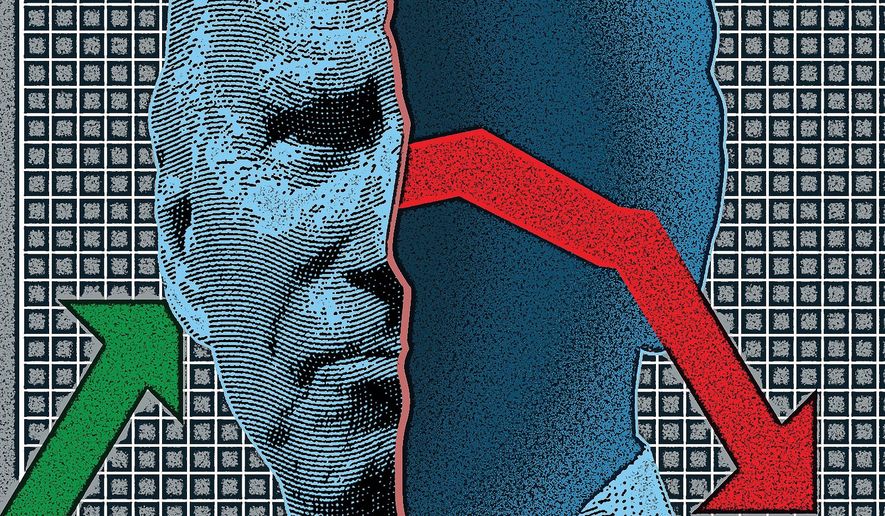OPINION:
If the approaching damage President Joe Biden has brought to the U.S. economic doorstep was not already painfully obvious, it assuredly is now. As he plows blindly forward into the teeth of the inflationary storm he spawned, the likelihood of destruction intensifies. There is little chance the no-apologies president will accept blame and correct course, leaving the nation with no choice but to hunker down and ride out the gale until the clouds part.
The release Tuesday of the Labor Department’s August inflation report tells the story that Americans cannot but dread: The Consumer Price Index shows prices climbed 0.1% over July’s figure, putting year-over-year inflation at a backbreaking 8.3%. Economists had banked on a slightly gentler 8.1% number, and disappointment sent the Dow Jones Industrial Average skidding downward nearly 4%.
Mr. Biden’s decision in 2021 to pour trillions of pandemic-recovery dollars into a resilient economy has pushed inflation to a 40-year high from where it has barely budged. Even as the Federal Reserve jacks up interest rates to tamp down the brunt of inflation, the president continues to multiply the economy-flattening force. The August figures demonstrate the Fed’s four previous rate hikes this year have had little effect thus far.
In callous disregard for the damning impact of his big-government spending, Mr. Biden and his fellow Democrats saluted one another on the White House lawn Tuesday. Their occasion for celebration: The passage of his so-called Inflation Reduction Act. Authorizing $430 billion in new spending, the bill’s effect portends the opposite of its title. The embarrassing spectacle of their partying while the stock market tanked may explain why Democratic Speaker Nancy Pelosi was forced to beg the audience to applaud her ode the president’s “extraordinary leadership.”
Seasoned Americans who have already lived through economic conditions featuring the double whammy of escalating interest rates and soaring inflation rates would not want to wish it upon the uninitiated. In 1979 with inflation running above 11%, Fed Chairman Paul Volcker fought to flatten the curve by tightening the nation’s money supply.
Subsequently, in 1980, inflation nearly hit 15% and central bank interest rates peaked above 19%. Allowing interest rates to top inflation resulted in a painful, double-dip recession, but it proved effective as inflation settled below 4% by the start of 1983.
It would not be senseless to tremble at the prospect of undergoing the sort of economic hardship that wracked the nation four decades ago when, for example, mortgage rates crested at 18.45% in 1981 — the highest ever recorded in the “land of the free.” And, in fact, voters believe by a 36%-12% margin that the Inflation Reduction Act actually will worsen inflation, according to a recent Economist-YouGov poll.
If there is a silver lining to the storm clouds overhead, it is that the approaching damage of Mr. Biden’s rising inflation and interest rates is coming into focus with piercing clarity. Two years hence, Americans will have an opportunity to repudiate the nation’s leadership and alter its direction. Fair elections, after all, have consequences.




Please read our comment policy before commenting.